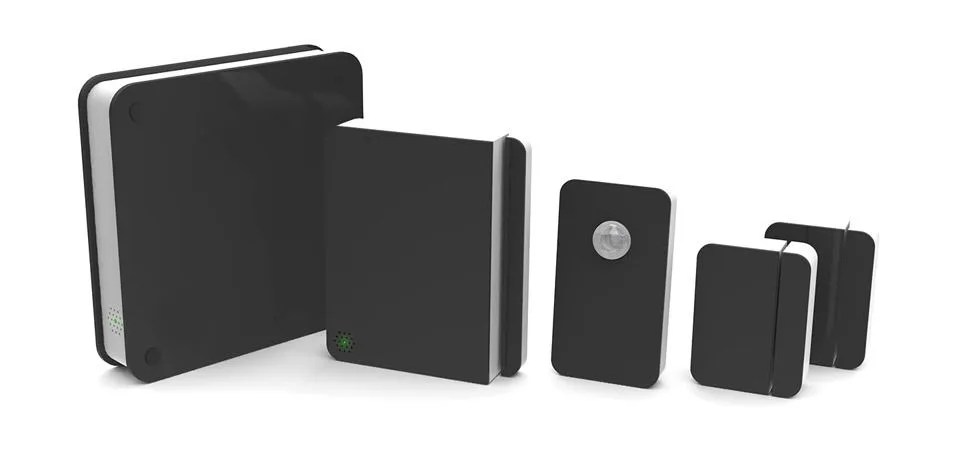Since the invention of the centrally monitored alarm system (however rudimentary) at the end of the 19th century, you got home security by paying a company like ADT to install a system and monitor your home. In the 21st century, surveillance tools have become more sophisticated with the addition of devices like cameras, fire alarms and flood detectors, but the underlying business model has remained the same: pay experts by the month to monitor your safety. (That or a one-time investment in a doberman pinscher.) In the past few years, though, home security has been changing in a big way. Like many entrenched business models, the market for home security has been upended by technology — challenged by portable, user-friendly security systems. Scout Alarm ($129+) is one of the main players of the new guard, and we got our hands on a system to test for several months.
ALL KINDS OF PROTECTION: The Best Bike Locks | The Best External Hard Drives | New Home Security Cameras
The brain of the Scout system is the hub, a wall-powered unit that communicates on a wireless mesh network (802.15.4 IEEE) with a range of more than 100 feet. You need the hub ($129) to get started and from there you can add sensors, including a door panel ($69), access sensor ($29), motion sensor ($49) and HD video camera ($169). You set each up one at a time from closest to the hub to farthest away (since the devices communicate with each other, this increases the range of the network). Following the instructions on the installation guide or in the app, it took me about 15 minutes to install the hub, a door panel and a motion sensor, and to activate to RFID fobs that arm and disarm the system. Once you’ve done that, you can move on to the app or web dashboard to configure your settings.
Like many entrenched business models, the market for home security has been upended by technology — challenged by portable, user-friendly security systems.
These configurations are the most important thing that happens in the app. There are default modes for “Home”, “Sleep”, “Away” and “Vacation”, or you can create custom modes. They’re formatted in an if/then formula; for example, if the door alarm is triggered, then I can get a push notification sent to my phone or I can let the 106 db sirens start chirping.
The app also allows you to monitor basic activity, like when the door is opened and closed or when other people’s key fobs activate and deactivate the alarm. This easy, personal monitoring is one of the key features that sets Scout apart from its competitors. And, if you’d like a more traditional service, you can purchase contract-free monitoring services through the app. For $20 per month you get 24/7 professional monitoring and police dispatch; for $10 you add 3G cellular and battery backup (the hub is equipped with both) in case the power or internet goes down. Scout can operate as a hybrid of DIY home security and conventional monitoring services.
Scout’s closest competitors in the DIY alarm market are iSmartAlarm, Oplink, Viper Home (of car alarm fame), SimpliSafe, and two single-unit, camera-based systems, Canary and Piper. All of these justify further research if you’re in the market for home security, particularly if you rent a home or apartment. They’re portable, relatively affordable and don’t require contracts. Scout has the best design of the multi-sensor systems, and Canary and Piper seem to be video monitors first, security systems second (they don’t come with additional sensors). The truth is that all of the systems mark a real step forward in democratizing home security. If you didn’t think you could afford it before, or you like to be able to move from place to place, home security is now quite practical.

